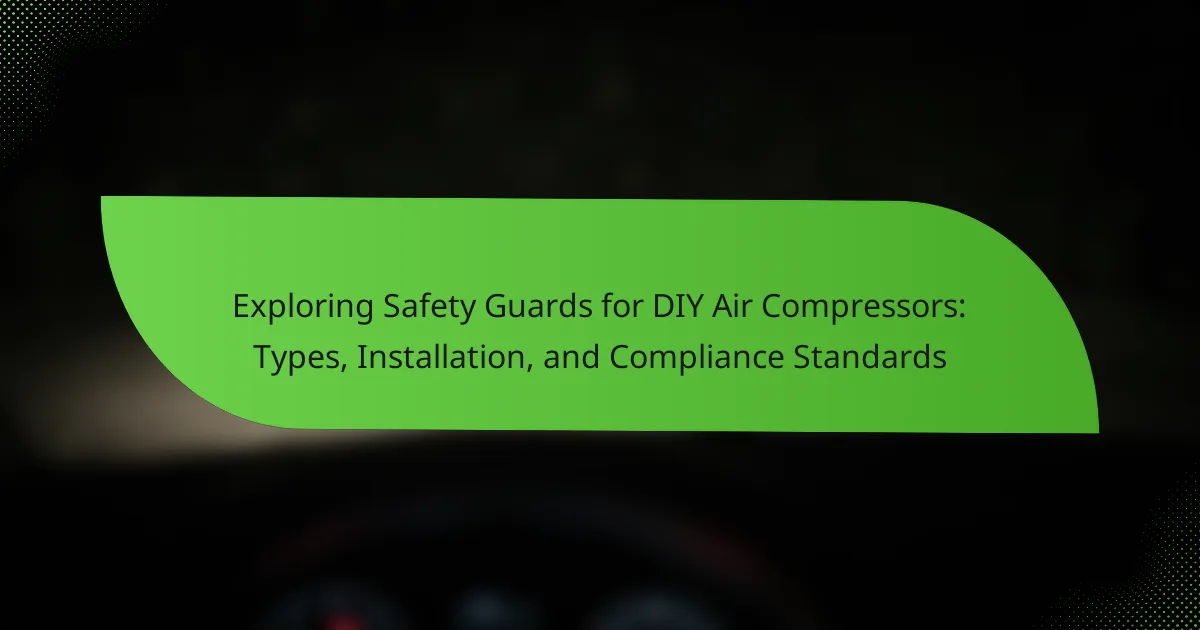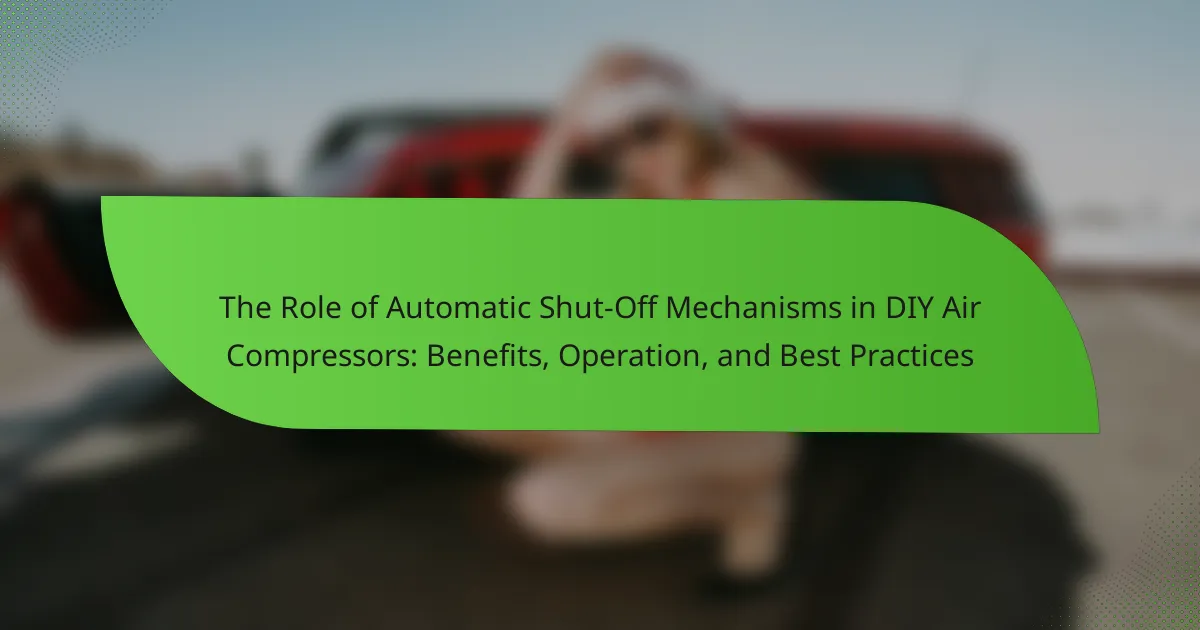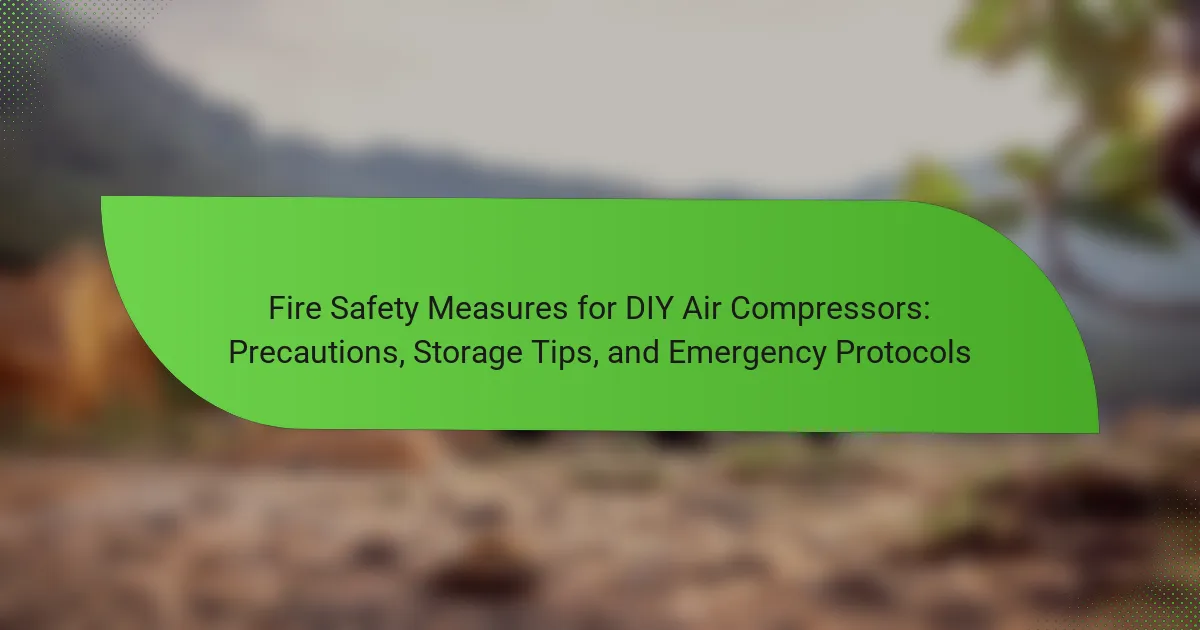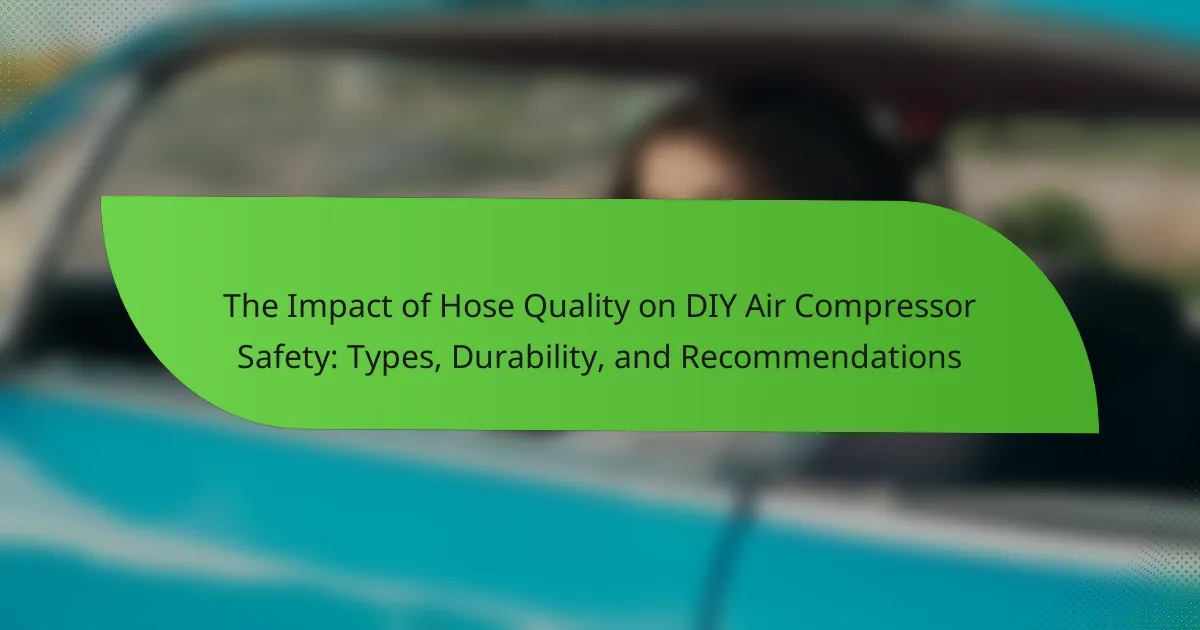A pressure relief valve is a critical safety device in DIY air compressors, designed to prevent excessive pressure buildup by automatically releasing air when pressure exceeds a set threshold, typically between 90 to 150 psi. This valve protects both the compressor and connected tools, ensuring safe operation and preventing accidents or equipment damage. The article covers various types of pressure relief valves, including spring-loaded, pilot-operated, and rupture disk valves, each serving unique applications. Additionally, it emphasizes the importance of regular inspections, maintenance, and adherence to safety precautions to ensure the reliable functioning of these valves in pressure relief systems.
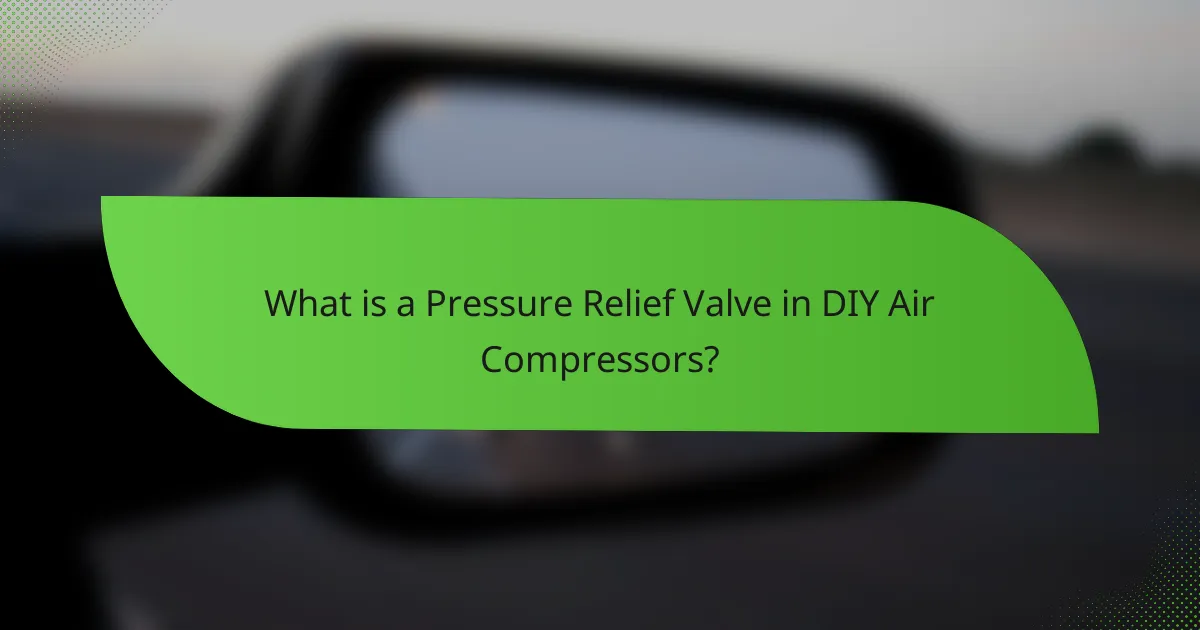
What is a Pressure Relief Valve in DIY Air Compressors?
A pressure relief valve in DIY air compressors is a safety device designed to prevent excessive pressure buildup. It automatically opens when the pressure exceeds a predetermined level. This action allows excess air to escape, thus protecting the compressor and connected tools. The valve ensures that the system operates within safe pressure limits. Typically, these valves are set to release pressure at specific thresholds, usually between 90 to 150 psi. They are essential for preventing accidents and equipment damage. Proper functioning of the pressure relief valve is crucial for safe compressor operation. Regular inspection and maintenance of this component are recommended to ensure reliability.
How does a Pressure Relief Valve function?
A Pressure Relief Valve (PRV) functions by automatically releasing excess pressure from a system. It is designed to protect equipment from overpressure conditions. When the pressure in a system exceeds a predetermined limit, the PRV opens. This allows the excess pressure to escape, preventing potential damage or failure. The valve closes again once the pressure drops to a safe level. PRVs are critical in applications like air compressors, where pressure control is essential for safety. They ensure operational safety by maintaining system integrity and preventing explosions.
What are the key components of a Pressure Relief Valve?
The key components of a Pressure Relief Valve include the valve body, spring, disc, and adjusting mechanism. The valve body houses the internal parts and connects to the system. The spring provides the necessary force to keep the valve closed until a set pressure is reached. The disc acts as a sealing element that opens to relieve excess pressure. The adjusting mechanism allows for setting the desired pressure threshold. These components work together to ensure safe operation by preventing overpressure in systems like air compressors.
How does each component contribute to its functionality?
The pressure relief valve consists of several components that work together to ensure safety and efficiency in air compressors. The spring provides the necessary tension to keep the valve closed until a specific pressure threshold is reached. The diaphragm or piston responds to pressure changes, allowing the valve to open when the set limit is exceeded. The valve body houses these components and directs airflow, ensuring proper operation. The adjustment mechanism allows users to set the desired pressure limit accurately. Each component’s interaction prevents over-pressurization, which can lead to equipment failure or accidents. Thus, the functionality of the pressure relief valve relies on the precise coordination of its components.
Why is a Pressure Relief Valve important in air compressors?
A pressure relief valve is important in air compressors because it prevents over-pressurization. Over-pressurization can lead to equipment failure or explosions. The valve releases excess pressure when it exceeds a safe limit. This safety mechanism protects both the compressor and the user. According to OSHA, pressure relief valves are critical for maintaining safe operational conditions. Regular maintenance ensures the valve functions correctly and effectively. Properly functioning valves can significantly reduce the risk of accidents. Thus, the pressure relief valve is essential for safety in air compressor operations.
What risks are associated with the absence of a Pressure Relief Valve?
The absence of a Pressure Relief Valve poses significant risks, including over-pressurization. Over-pressurization can lead to equipment failure, resulting in dangerous explosions. Without this valve, pressure can build up unchecked, creating hazardous conditions. This scenario endangers operators and bystanders alike. Equipment such as air compressors may sustain irreversible damage. Additionally, the risk of injury from flying debris increases without a pressure release mechanism. Historical incidents illustrate these dangers, emphasizing the critical need for pressure relief systems in high-pressure applications.
How does it enhance safety during operation?
The pressure relief valve enhances safety during operation by preventing excessive pressure build-up in the air compressor. When pressure exceeds a predetermined level, the valve opens to release air. This action helps avoid potential explosions or equipment damage. The valve typically activates at specific pressure thresholds, ensuring timely release. According to safety standards, regular testing of the valve is crucial for effective operation. This testing confirms that the valve functions correctly under pressure. A malfunctioning valve can lead to serious accidents, emphasizing its importance in safety protocols.
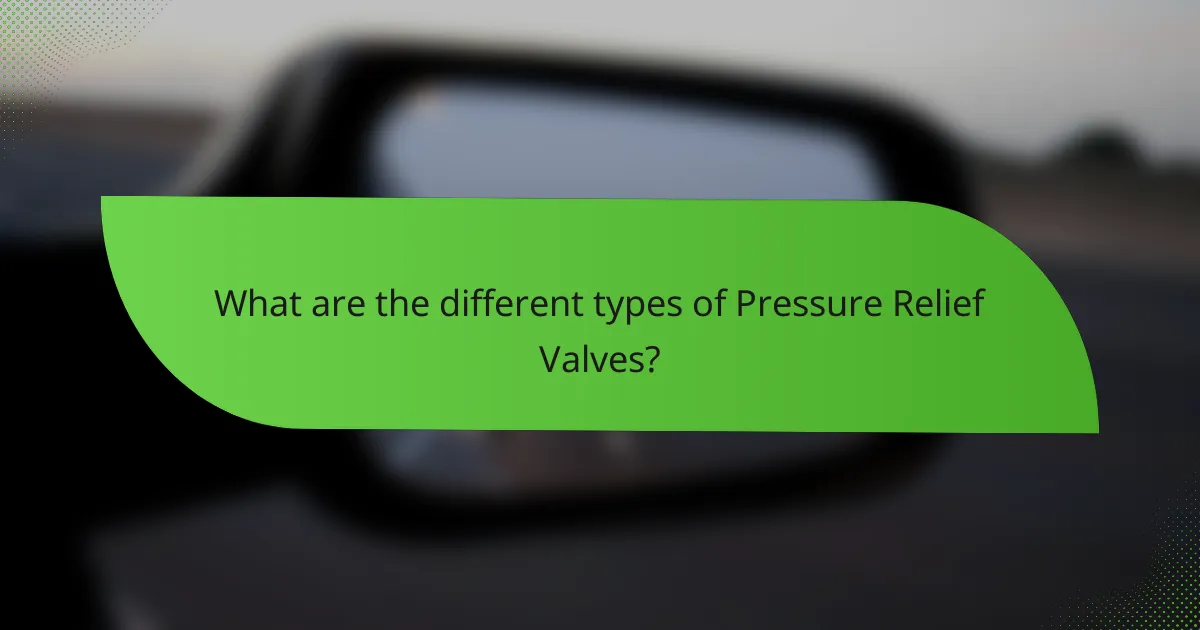
What are the different types of Pressure Relief Valves?
The different types of pressure relief valves include spring-loaded valves, pilot-operated valves, and rupture disk valves. Spring-loaded valves use a spring mechanism to open at a predetermined pressure. They are widely used due to their simplicity and reliability. Pilot-operated valves utilize a small pilot valve to control the main valve. This design allows for higher flow rates and better sealing. Rupture disk valves are designed to burst at a specific pressure, providing a fail-safe option. Each valve type serves distinct applications in pressure relief systems.
How do spring-loaded Pressure Relief Valves operate?
Spring-loaded pressure relief valves operate by using a spring mechanism to control the release of pressure. When the system pressure exceeds a predetermined level, the force of the pressure pushes against the valve seat. This force overcomes the spring tension, causing the valve to open. As the valve opens, excess pressure is released from the system. The valve will remain open until the pressure drops below the set level. Once the pressure is reduced, the spring pushes the valve back to its closed position. This operation ensures safety by preventing overpressure conditions in systems such as air compressors.
What are the advantages of using spring-loaded valves?
Spring-loaded valves provide reliable pressure control in various systems. They automatically adjust to maintain desired pressure levels. This self-regulating feature enhances safety by preventing overpressure situations. Spring-loaded valves are also durable and require minimal maintenance. Their design allows for quick response times to pressure changes. Additionally, they can be used in a wide range of applications. This versatility makes them a preferred choice in many industries.
In what scenarios are spring-loaded valves preferred?
Spring-loaded valves are preferred in scenarios requiring consistent pressure control. They maintain a predetermined pressure setting effectively. This is crucial in applications like air compressors where safety is paramount. Spring-loaded valves respond quickly to pressure changes. They can prevent overpressure situations by releasing excess pressure. Their design allows for quick reseating after operation. This ensures minimal downtime and efficient operation. Additionally, they are reliable in various environmental conditions. Their simplicity and durability make them suitable for DIY projects.
What are pilot-operated Pressure Relief Valves?
Pilot-operated pressure relief valves are devices that control pressure in a system. They operate using a pilot mechanism that opens the valve when a predetermined pressure is reached. This design allows for precise pressure regulation. The pilot mechanism typically consists of a small valve that responds to changes in pressure. When the system pressure exceeds a set limit, the pilot valve opens. This action relieves excess pressure from the main system. Pilot-operated valves are known for their efficiency and reliability. They are commonly used in applications requiring high flow rates and accuracy.
What makes pilot-operated valves unique?
Pilot-operated valves are unique due to their ability to control high flow rates with minimal input pressure. They utilize a pilot signal, which regulates the main valve, allowing for efficient operation. This design reduces the energy required for actuation compared to direct-operated valves. Pilot-operated valves often feature a larger flow capacity, making them suitable for high-demand applications. Their construction includes a small pilot valve that controls a larger main valve, enhancing responsiveness. This mechanism allows for precise pressure regulation in systems like air compressors. The efficiency of pilot-operated valves can lead to improved system performance and reduced wear on components.
How do they compare to other types of valves?
Pressure relief valves differ from other types of valves primarily in their function and application. They are designed to release excess pressure in a system to prevent failures. In contrast, gate valves control flow and are typically used for on/off service. Pressure relief valves activate automatically at a predetermined pressure, while other valves may require manual operation. Additionally, pressure relief valves are critical for safety in high-pressure systems, unlike many other valve types that do not serve a safety function. Their unique role in protecting equipment from overpressure situations sets them apart from other valves.
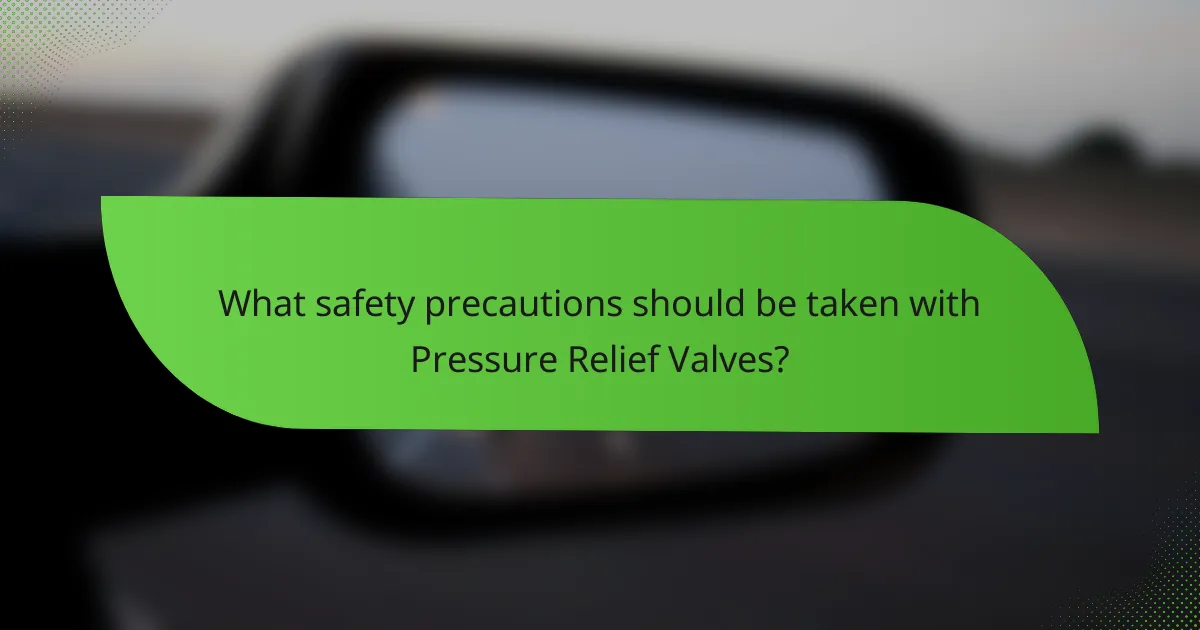
What safety precautions should be taken with Pressure Relief Valves?
Safety precautions for Pressure Relief Valves include regular inspections and maintenance. Inspect valves for signs of corrosion or damage. Ensure proper installation according to manufacturer specifications. Test the valve’s functionality periodically to confirm it operates as intended. Maintain a clear area around the valve to prevent obstructions. Use protective gear when working near high-pressure systems. Follow industry standards and guidelines for pressure relief systems. These practices help prevent accidents and ensure the safe operation of air compressors.
How can users ensure proper installation of a Pressure Relief Valve?
Users can ensure proper installation of a Pressure Relief Valve by following specific guidelines. First, they should select a valve that matches the compressor’s specifications. This includes checking the pressure rating and size. Next, users must install the valve in a vertical position for optimal performance. They should ensure that the valve is free from debris and contaminants before installation. Tightening the valve securely is crucial to prevent leaks. Users should also test the valve after installation to confirm it operates correctly. Regular maintenance checks are essential to ensure ongoing functionality. Following these steps helps maintain safety and efficiency in air compressor operations.
What common mistakes should be avoided during installation?
Common mistakes to avoid during installation include improper placement of the pressure relief valve. The valve should be installed at the highest point of the air compressor system. Incorrect orientation can prevent the valve from functioning properly. Failing to check for leaks after installation is another critical mistake. Leaks can lead to pressure loss and safety hazards. Additionally, neglecting to follow the manufacturer’s specifications can result in equipment damage. Over-tightening connections may also cause component failure. Lastly, ignoring safety precautions during installation can pose serious risks. These mistakes can compromise the effectiveness and safety of the pressure relief valve in DIY air compressors.
What tools are necessary for proper installation?
A wrench, screwdriver, and pipe sealant are necessary for proper installation. A wrench is used to tighten fittings securely. A screwdriver helps in securing any screws in place. Pipe sealant ensures a leak-proof connection. These tools are essential for maintaining safety and functionality. Proper installation reduces the risk of air leaks. Each tool plays a critical role in the overall setup.
What maintenance practices are essential for Pressure Relief Valves?
Regular inspection is essential for maintaining pressure relief valves. Inspect these valves at least once a year for signs of wear or damage. Cleaning the valve is crucial to ensure it operates effectively. Use appropriate solvents to remove debris and buildup. Testing the valve’s functionality is necessary to confirm it opens and closes correctly. This can be done by simulating pressure conditions. Replacement of seals and components may be required if they show signs of degradation. Document all maintenance activities for future reference. Following manufacturer guidelines ensures compliance and safety.
How often should Pressure Relief Valves be inspected?
Pressure relief valves should be inspected regularly, typically every six months. This frequency ensures that the valves function properly and maintain safety standards. Inspections should include checking for any signs of wear or corrosion. Additionally, testing the valve’s operation is crucial to confirm it opens at the designated pressure. Following manufacturer recommendations is essential for specific inspection intervals. Regular maintenance helps prevent potential failures that could lead to hazardous situations. Safety regulations often mandate these inspections for compliance.
What signs indicate that a Pressure Relief Valve needs replacement?
Signs indicating that a Pressure Relief Valve needs replacement include visible leaks, corrosion, or damage on the valve body. Additionally, if the valve fails to open at the set pressure, it requires replacement. Unusual noises during operation may also signal a malfunction. Frequent tripping or activation of the valve indicates it may be worn out. Furthermore, if the valve does not reseat properly after releasing pressure, it should be replaced. Regular inspections should be conducted to identify these issues early. Maintaining the valve’s functionality is crucial for safety in air compressor operations.
What troubleshooting tips can help with Pressure Relief Valve issues?
Check for visible leaks around the pressure relief valve. Leaks indicate a faulty seal or damage. Ensure the valve is not stuck in the open position. A stuck valve can lead to pressure loss. Clean the valve to remove debris that may cause malfunction. Inspect the valve for corrosion or wear, which can affect performance. Test the valve by manually lifting it to see if it closes properly. Replace the valve if it fails to function correctly. Regular maintenance can prevent issues and ensure safety in operation.
The primary entity of this article is the pressure relief valve, a crucial safety component in DIY air compressors designed to prevent over-pressurization. The article provides a detailed examination of the valve’s functionality, highlighting how it operates to release excess pressure and protect equipment from damage. It discusses the key components of the valve, the various types available, and the importance of regular maintenance and inspection to ensure operational safety. Additionally, it outlines the risks associated with the absence of a pressure relief valve and offers essential safety precautions for proper installation and maintenance.
